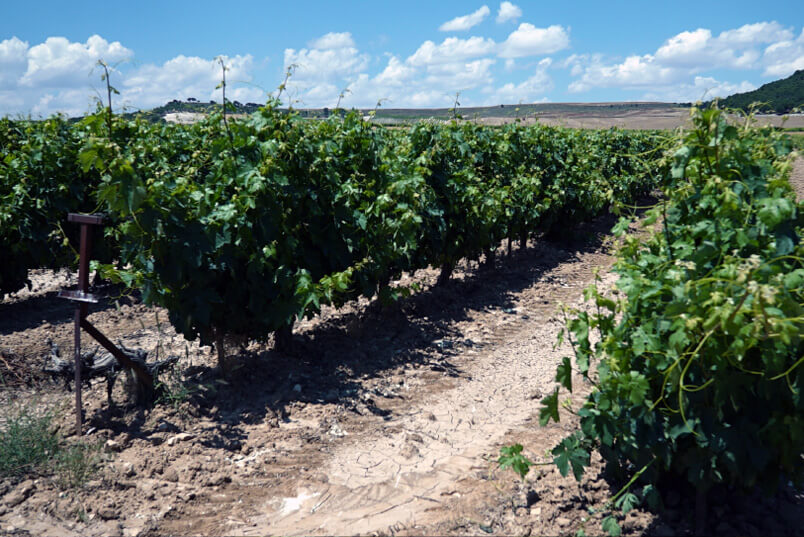THE VINEYARDS
Where life is born

When José decided to plant his own vineyards he looked for the most appropriate land for cultivation regarding orientation, soil type, etc., bearing in mind that “vines are plants which live longer than oneself”.
Once the location was chosen, three fundamental principles determined the planting of the vineyard:
1. Correct sub-soiling of the land, to favor the plant's access to water, its oxygenation and better gripping for the roots.
2. Define the orientation of the lines in the search for homogeneous radiation of the plant and the clusters.
3. Avoid planting with a grafted plant, even if it speeds up the process. Only use rootstocks and once they have taken hold, they are then grafted with tempranillo by expert grafters.
The vineyard is everything to the Barbero family; it is his way of life and everything revolves around it.
Many years of observing and learning were needed to understand winegrowing and obtain a premium quality grape.

A plot of almost 12 hectares, vineyards of the Tempranillo variety, with entirely goblet trained vines. This estate is divided into two plots and is especially protected from spring frosts, with a variety of soils making our wines unique and distinctive.

Located on the slopes of La Mambla and La Cuchilla outliers, El Esparragal is a plot of 5 hectares of Tempranillo, with an almost magical biodiversity and balance between flora and fauna. Its excellent quality grapes reflect the maximum expression of our land, the reward for doing your best.
pruning and tending the vines
Pruning is one of the pillars in the cultivation of the vineyard. “Pruning takes place to control production and improve quality”, a basic concept that is part of family philosophy. Knowing about the buds and sap currents is required when pruning, always respecting the vine; understanding the art of pruning and having a good knowledge of the techniques are vital for controlling the plant and obtaining excellent quality grapes.



FORGOTTEN PRUNNING DOCUMENTARY
“Wine growers around the world share a common concern: grapevine diseases. The premature death of the vine prevents it from living as long as it did in the past. A few decades ago, a vine that lasted more than 80 years was common, but now it has almost become a utopia. Looking at the past can help us understand what is behind this loss of longevity.
The focus should be on pruning. As Columella said in the first century in his "Twelve Books on Agriculture", it is the "most fundamental task we do in the vineyard". In this documentary, we reminisce the past to rediscover the diversity of almost forgotten pruning methods in different areas of Spain. Thriving traditional pruning practices still surviving in some generally old vineyards, keeping the secret of vine longevity. A secret always based on respecting the plants, understanding that the vines are living organisms in need of proper attention to survive.”

Every year a host of sensations appear when harvest times comes around. It brings relief, sadness, joy... It is the result of a whole year working and looking up at the sky.
Picking the fruit at its optimum ripening point is of vital importance. Therefore, 20 days before harvesting, the grape condition and its stage of ripening in the different areas of the vineyard is carefully observed. Finally, according to this analysis and in conjunction with the visual and sensory condition of the grape, the starting date for the grape harvest is decided.
Respect for the cluster characterizes how we harvest: branches are not broken, grapes are not manhandled, the amount that is collected in each box is checked (15 kg boxes) as is cleaning and placement.
When the grapes arrive at the winery, they make their way along a selection table and de-stemming takes place.
Temperature control is fundamental so as not to lose the properties of the grape, as well as cleanliness throughout the whole process.



